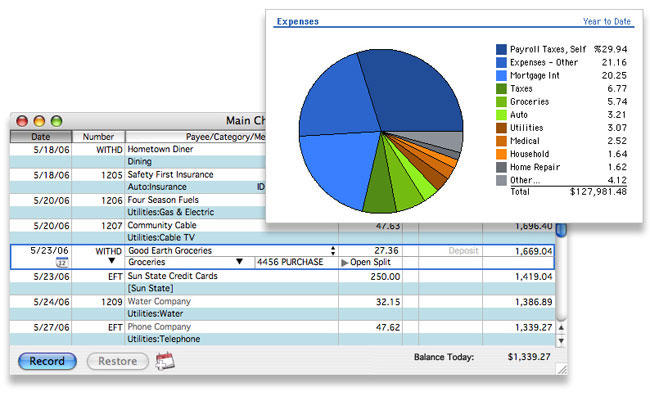

#Quicken mac for sierra mac for mac#
So if your relative can get their version of Quicken Essentials for Mac to export data into one of these formats then that's a good start. Quicken's support for OFX has been hit and miss, but most versions have supported exporting into the QIF format.

QIF is a format supported by many financial packages, while the Open Financial Exchange (OFX) format is used by banks and supported by most (if not all) financial packages. In most cases, the best workflow for migrating from Quicken to another product is to export the data from Quicken into either the QIF or OFX format. This means you need to find alternative software that can either import data from Quicken's native QDF format, or software that can import data from one of the other exported formats Quicken has supported from time to time. Unfortunately, the options offered have differed over time and with different versions. Quicken stores data in a proprietary QDF file format, but has always offered options for exporting data into other formats. I'd be happy to update/expand this answer when it's clearer what the exact situation is and what your relative wants to achieve. Intuit just never really handled things very well and lots of users got burned because of it. The whole process is going to be somewhat messy as the absence of a common cross-platform file format was one of the biggest issues of Quicken software (not just between Mac/Windows, but between OS 9 and OS X versions and between PowerPC and Intel and so on). In this case they may need to export the data into a different format (once again, depending on the version they have) and then using a newer version of Quicken (but not a recent version) or another third party app to import the data and export it into a suitable format for use/importing by the current version of Quicken. On the other hand, if they want to make full use of the data in a newer version of Quicken, then importing CSV files may not even be supported (depending on the version and platform, etc). These can then be imported/viewed in a plethora of software (including Apple's Numbers and MS Excel). Once that works fine, I'd copy across the five binary files and test to see that they can be opened and viewed just fine from within Quicken Essentials for Mac.Īssuming this works as expected, what you need to do from here depends on what the end goal is, and the actual version of Quicken Essentials for Mac.įor example, if all they want to do is be able to view the data if/when needed, then exporting to CSV files may be all they need to do.
#Quicken mac for sierra mac mac os#
Broadly speaking, I would create a virtual machine running Mac OS El Capitan and then install Quicken Essentials for Mac onto that.


 0 kommentar(er)
0 kommentar(er)
